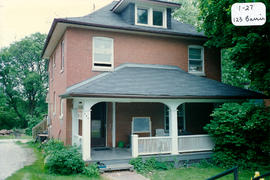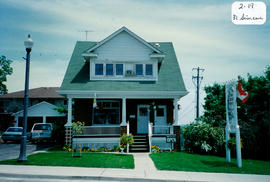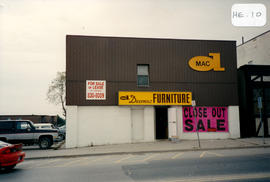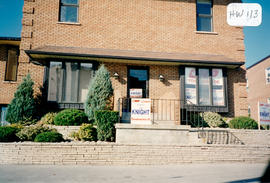Event Date : Wednesday, August 27, 1952
Event Type : Death
Description : Over two years ago the many friends of Arthur James (Artie) Saint were saddened when they learned that he was forced to lead the life of an invalid because of a serious heart condition. in the intervening period his life had been repeatedly despaired for, then he would rally and hope for him was revived. Recently he had been a patient in Toronto General Hospital and since coming home he appeared to be greatly improved and had been around the house and even to the home of friends. However, the long period of poor health had taken a heavy toll on his strength and early Wednesday morning he suffered a stroke, followed a few hours later by two more, the latter resulting in his death. A.J. Saint was born in the Scotch Settlement at Ham's Corner's a son of Mr. Frank Saint, 91, now one of Bradford's oldest residents, and the late Mrs. Saint. He attended school at No. 4, Scotch Settlement, and Bradford High School. One of the most industrious and honest of workers, Art Saint early learned carpentering. In this trade he excelled and before long he became a contractor and one rated as second to none throughout a large area. Some of the largest and finest buildings of the district were built under the careful supervision of Art Saint, as were also some of the small but equally sturdy, ones. He was noted for the high quality and honesty of his workmanship, and his loss of health in the prime of his life can be at least partially attributed to energy expended in giving such faithful and exacting service. In 1929 he married Marguerite MacDonald, also of the Scotch Settlement, and they made their home in Bradford where they have since resided. Besides his wife, Mr. Saint is survived by one son, Keith, of Bradford; two daughters, Helen, now in Toronto, and Karen at home; one brother, Fred of Regina; two sisters, Mrs. Bateman (Wilma) of Toronto, and Miss Lena of Bradford, and his aged father in Bradford. Mr. Saint was a member of the Davey Hunt Club and of Simcoe Masonic Lodge No. 79, under which auspices his funeral was held on Saturday afternoon form his late residence. Rev. H.G. Blake conducted the services and interment was in Mount Pleasant Cemetery, Bradford. Pallbearers were John Bowser, Aurora; W. Van Norman, Guelph; Major Thos. Ewing, Newmarket; Dr. G.L. Blackwell, Leonard Saint and Samuel McDonell.







